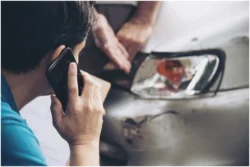
Press Release (ePRNews.com) - Syracuse, NY - Dec 02, 2017 (UTC) - This article and subsequent ones will discuss the most common methods used to detect a speeding vehicles and the defenses a driver can use.
The most common moving violations are speeding tickets, as a result most drivers dread being ticketed due to their speed. If you want to fight your ticket there two things you must know, these are:
Were you charged under an ‘absolute’, ‘presumed’ or ‘basic speed’ law?
Did the traffic officer determine your speed through pacing, aircraft, radar, laser, VASCAR or other means?
There may be one way to speed but there are a number of ways to detect your speed. This article and subsequent ones will discuss the most common methods used to detect a speeding vehicles and the defenses a driver can use.
Pacing
Pacing is whereby a police officer follows a suspected speeder and uses his or her own speedometer to clock the suspect’s speed. The basic technique requires that the officer maintain a constant distance between the police vehicle and the suspects’ car for enough time to make a reasonably accurate estimate of the suspect’s speed. In some states the law requires that the officer must verify speed by pacing over a certain distance, however, there are defenses that can be used to disqualify the method of pacing, these include the following:
Road configuration – road configurations can help prove the inadequacy of pacing. Hills, curves, traffic lights and stop signs can all help to prove that an officer did not pursue for long enough, as these require a variation of increasing speed and slowing down.
The farther back an officer, the less accurate the pace – in order for an officer to have an accurate pace, the officer must keep an equal distance between the patrol car and the suspect’s vehicle for the entire duration of the pacing. The officer’s pedometer reading will basically mean nothing if the officer is driving faster than the suspect in an attempt to ‘catch up’ with him or her. It must be noted that the most accurate pace occurs where the officer is right behind the suspect’s vehicle, however, patrol officers prefer to remain some distance behind a suspect so as to avoid alerting the driver of their presence. As a defense the driver needs to show that the officer’s supposed pacing speed was really just a catch up speed. The driver can also question the duration over which the police officer paced him or her for.
Pacing at dusk or night – pacing is much more difficult in the fading light of dusk or in complete darkness, unless the officer is right on your tail. In darkness the officer’s visual cues are reduced to a pair of taillights which poses a problem in keeping track of the same pair of taillights.
Road conditions affect pacing – “pacing is easiest and most accurate on a straight road with no hills, dips or other obstacles and where the officer can continuously see the vehicle that he or she is following. It must be noted that hills, freeway interchanges, dips, curves, busy intersections and heavy traffic make for a poor pacing environment. In fact these are all obstacles that can be used to challenge the pacing of your vehicle for accuracy”.
If you have been issued with a speeding ticket which you want to fight seek out the best lawyer for speeding tickets for legal advice and representation.
About the company:
The DeRoberts Law Firm is a law firm of renowned professionals who specialize in traffic violations and family law. To hire divorce lawyers in Syracuse NY contact the DeRoberts Law Firm. For legal representation in a family court in Oswego NY make an appointment, today.
Source : DeRoberts Law Firm




